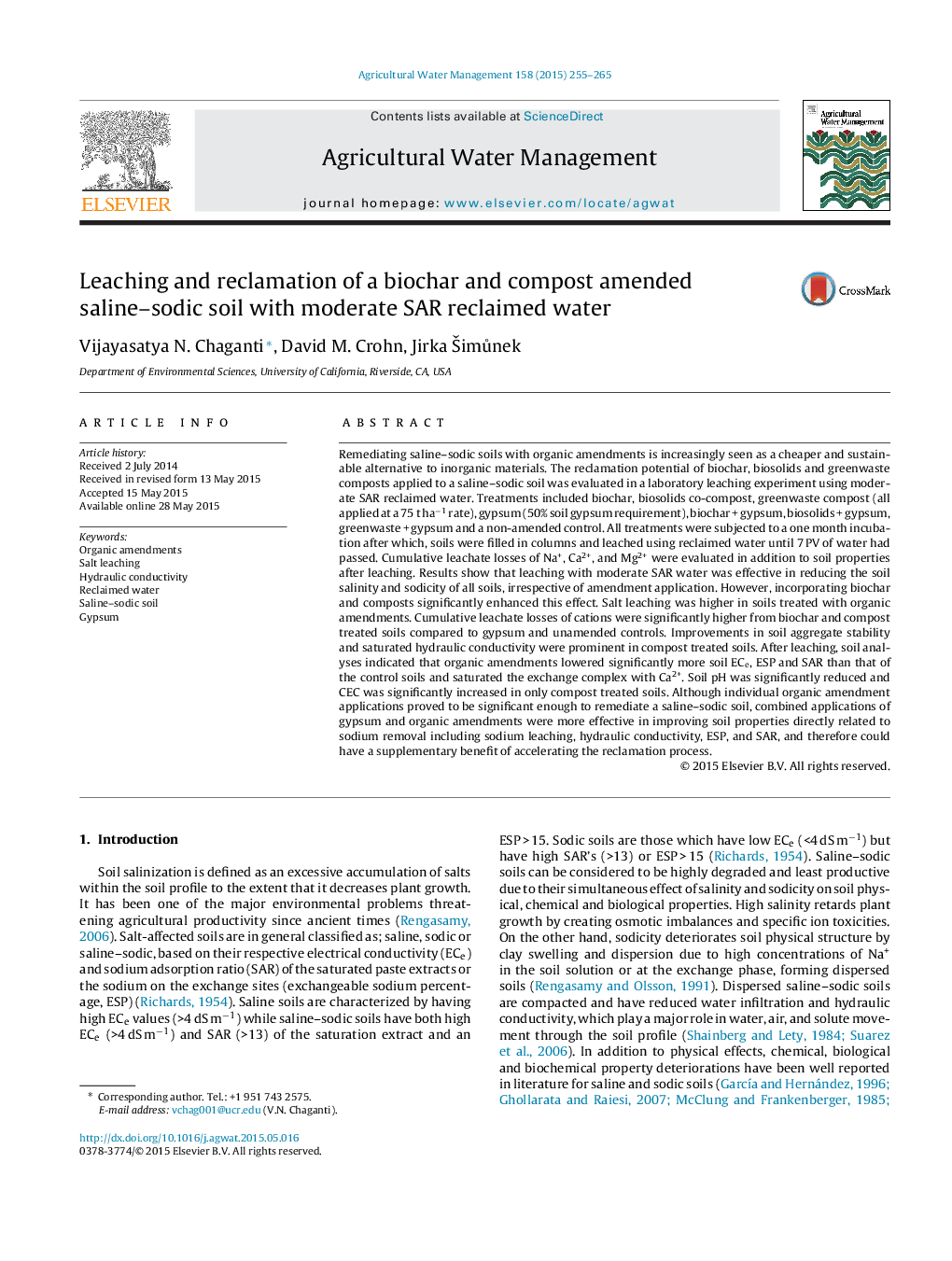| Article ID | Journal | Published Year | Pages | File Type |
|---|---|---|---|---|
| 4478441 | Agricultural Water Management | 2015 | 11 Pages |
•Organic amendments were tested for their reclamation potential in a saline–sodic soil.•Leaching of amended soils was conducted using municipal reclaimed water.•Soil aggregation was significantly improved by composts than biochar.•Saturated hydraulic conductivity was greater in compost and biochar treated soils.•Salinity and sodicity reductions were greater in organic amended soils.
Remediating saline–sodic soils with organic amendments is increasingly seen as a cheaper and sustainable alternative to inorganic materials. The reclamation potential of biochar, biosolids and greenwaste composts applied to a saline–sodic soil was evaluated in a laboratory leaching experiment using moderate SAR reclaimed water. Treatments included biochar, biosolids co-compost, greenwaste compost (all applied at a 75 t ha−1 rate), gypsum (50% soil gypsum requirement), biochar + gypsum, biosolids + gypsum, greenwaste + gypsum and a non-amended control. All treatments were subjected to a one month incubation after which, soils were filled in columns and leached using reclaimed water until 7 PV of water had passed. Cumulative leachate losses of Na+, Ca2+, and Mg2+ were evaluated in addition to soil properties after leaching. Results show that leaching with moderate SAR water was effective in reducing the soil salinity and sodicity of all soils, irrespective of amendment application. However, incorporating biochar and composts significantly enhanced this effect. Salt leaching was higher in soils treated with organic amendments. Cumulative leachate losses of cations were significantly higher from biochar and compost treated soils compared to gypsum and unamended controls. Improvements in soil aggregate stability and saturated hydraulic conductivity were prominent in compost treated soils. After leaching, soil analyses indicated that organic amendments lowered significantly more soil ECe, ESP and SAR than that of the control soils and saturated the exchange complex with Ca2+. Soil pH was significantly reduced and CEC was significantly increased in only compost treated soils. Although individual organic amendment applications proved to be significant enough to remediate a saline–sodic soil, combined applications of gypsum and organic amendments were more effective in improving soil properties directly related to sodium removal including sodium leaching, hydraulic conductivity, ESP, and SAR, and therefore could have a supplementary benefit of accelerating the reclamation process.
